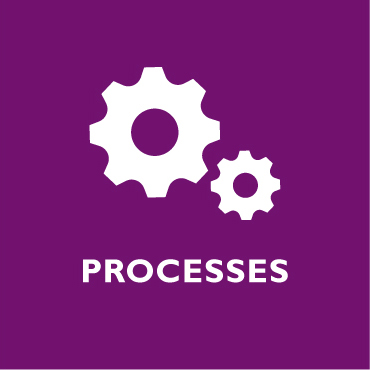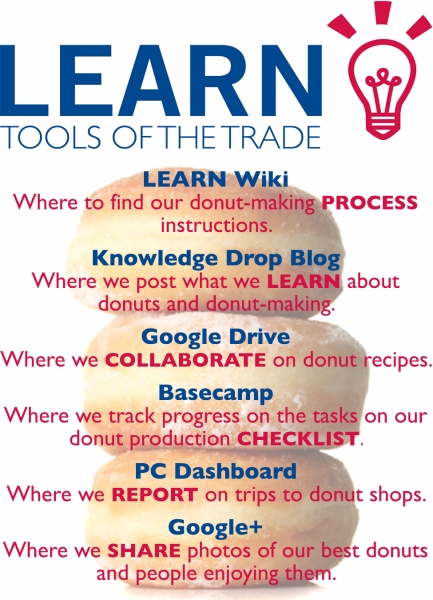Supporting Processes that Strengthen our Team’s Collaborating, Learning and Adapting: “Walking the CLA Talk” Part 2 of 6

This blog post is part of a USAID Learning Lab series called Working Smarter: Everyday CLA techniques to help you be more productive. The goal of the series is to share practical ways to integrate collaborating, learning, and adapting into your work.
Piers Bocock is Chief of Party of the USAID LEARN contract.

Last month I kicked off the first installment of six monthly blogs designed to share my experience practicing what we preach -- applying the Collaborating, Learning and Adapting (CLA) Framework to our work on the USAID LEARN contract. In the January post, we began our journey on the “Enabling Conditions” side of the framework, focusing on “Culture”. I talked about ways in which we intentionally set out to focus on openness, relationship-building, and continuous learning and improvement. This month’s blog shifts clockwise to talk about the processes that support effective CLA.
A few weeks ago, I had coffee with a former colleague who had recently taken on a new position as the Director of Knowledge Management at his company. He was charged with developing and leading implementation of a Knowledge Management (KM) strategy for the organization and wanted to pick my brain. He was curious about how the LEARN contract is working with USAID’s CLA Team to help the Agency become a more intentional learning organization.
“Wow,” he said, after I had described our work. “That’s a ton of moving parts, but it sounds like you must have a pretty comprehensive KM strategy to keep track of it all. Any chance you can send it to me in case it can help me with mine?” In an instant, my mind transported me to a key learning moment early in my career: Within two weeks of joining a new company, I developed a “KM Strategy” and proudly shared it with the COO. He loved it – it was beautifully written and made total sense, based on everything he (and he alone) had told me about the place. The problem was, it wasn’t based in any reality because I hadn’t talked to anyone else but my boss about it. Two years later we had a very expensive KM platform in place that nobody used unless they were forced to.
To avoid leading my colleague and others into the alluring trap that the main solution to an organization’s KM challenges is a good KM strategy, here are some things I’ve learned along the way:
A strategy, no matter how well-written or researched or “comprehensive,” is rarely worth more than the paper it’s printed on. The value comes in putting practical knowledge management procedures in place that are built into everyday work processes; are not burdensome to users; and provide access to the best available information in the right format at the right time to help make informed recommendations or decisions.
There is no such thing as a “comprehensive knowledge management strategy.” If you try to create it, it will never, ever get implemented before it’s already out of date. Learning from painful experience, it’s far more valuable to have clearly articulated knowledge management needs; clarity on where to capture, access, and update the data, information, and knowledge you need; and then a basic plan (not a complete “strategy”) that includes core principles and agreements, and a few, key “low-hanging fruit” actions to get the plan moving and get buy-in for your KM processes.
A leader without followers is just a person out for a walk. I love that quote; I don’t know who really said it first, but I love it because I too have been in a position of being appointed as the “KM Leader” for various organizations, and it is an impossible task without broad buy-in of users, and a culture that recognizes that good knowledge management is part of everyone’s job.
I advised my colleague to consider the following questions when developing a KM plan:
- Who’s your audience? Who will be the main users and consumers of this plan?
- What are their main KM needs or pain points right now? Figure out two or three, tops.
- What systems or processes are already actually being voluntarily used by people, and actually valued?
When the USAID LEARN contract began, there was a temptation to develop a KM strategy before anything else. After all, the full name of the LEARN contract is actually “Knowledge Management and Learning.” There was also pressure to figure out what we needed to do right now, or tomorrow—even if temporary—to keep track of all the new information flying our way, whether from the client, or the company who had hired us all, or from this diverse and widely experienced team that was just forming.
In a way, it was a blessing that we didn’t have a huge and powerful KM “system” in place to try to figure out. We also knew that our user base was, for the time-being, just the ten us of on the project, with only tacit institutional memory from our previous work. So we looked at what we needed to be able to know and what free (or relatively cheap) platforms were available to us, the knowledge that we wanted to share from previous experience and that we were rapidly capturing as we ramped up our project. Then a couple of creative folks on the team figured out a simple system of explaining when to use which platforms and processes for what; the result was what we call our LEARN Tools of the Trade “donut” card (homage to an old donut shop commercial). And it’s been incredibly helpful, especially for new staff who have join us as we’ve more than tripled in size.

When we work with USAID Missions and other USAID Operating Units, we ask them to consider the systems they have in place to provide a positive enabling environment for KM and Learning. The three subcomponents that we have found need to receive attention are knowledge management processes, platforms, and stakeholders; ways to contribute to and build out institutional memory; and the degree to which these systems, processes, people and organizational knowledge are leveraged for effective decision-making.
In our case, our “donut card” and the platforms we put in place for our own KM processes were essential to building our institutional memory—from the knowledge capture we did in the early months to get up to speed on USAID’s CLA experience to date, to a way to help bring new staff on more effectively. And the way we chose to establish the processes we had—and continue to evolve—were based on the decisions we knew we’d had to be able to make, and continue to this day to help us make more informed decisions to move us forward. So it’s not the strategy per se that matters, it’s what it addresses, in an iterative way, including:
- Understanding users’ information, knowledge and decision-making needs;
- Identifying simple, quick-win ways to meet those needs in a non-burdensome way; and
- Iterating from there.
The epilogue to this story is that my colleague has started talking to people across his company about their pain points, and reports that, “the most consistent response I get is, ‘Hey, it’s great that someone is finally asking us about our KM needs, instead of telling us what to do.’”
Tune in next month when I turn my attention to LEARN’s experience on resources for effective CLA – always a fun topic!



